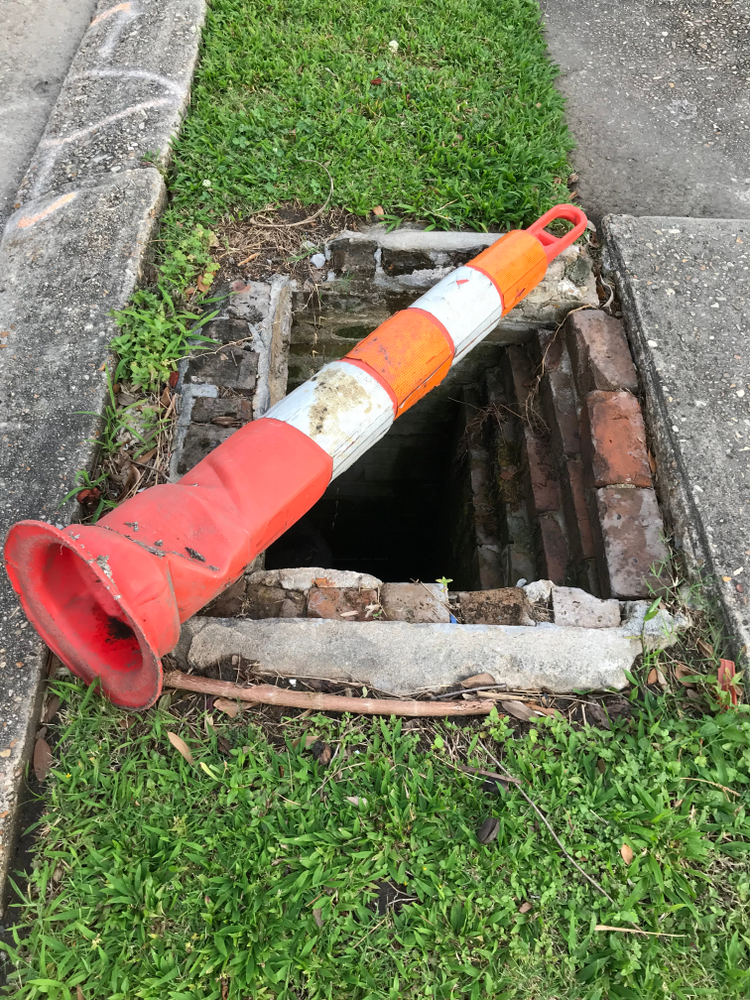The Occupational Safety and Health Administration (OSHA) oversees and enforces workplace safety policies for nearly every industry in America, except those falling under the domain of other federal agencies, such as the Mine Safety and Health Administration. OSHA collects data related to certain work-related employee injuries and accidents and require covered employers to report all on-the-job fatalities or hospitalizations. To help mitigate such incidents and enforce compliance, OSHA may investigate companies to assess potential violations.
What is an OSHA Violation?
Broadly speaking, an OSHA violation refers to when an employer doesn’t comply with written OSHA policies related to workplace hazards. When violations are determined, OSHA may issue citations and monetary fines.
As the agency notes, “Each citation shall be in writing and shall describe with particularity the nature of the violation, including a reference to the provision of the Act, standard, rule, regulation, or order alleged to have been violated.” Citations must be placed near where the violation occurred and must list a reasonable timeframe for the employer to fix any outstanding issues.
OSHA lists different categories of possible citations, each with its own range of monetary penalties. Categories include: Serious, Other-than-Serious, Willful or Repeated, Failure to Abate, Violation of Posting Requirements, and De Minimis (a technical violation, but with no serious impact on health and safety).
OSHA Penalty Amount Ranges by Category
The minimum and maximum penalty amounts are occasionally adjusted in accordance with the Department of Labor’s Federal Civil Penalties Inflation Adjustment Act. Current amounts are as follows:
Violation Category | Minimum Penalty | Maximum Penalty (per violation) |
Serious | $1,036 | $15,625 |
Other-Than-Serious | $0 | $15,625 |
Willful or Repeated | $10,360 | $156,259 |
Violation of Posting Requirements | $0 | $15,625 |
Failure-to-Abate | N/A | $15,625 (per day, up to 30 days) |
With the risk of such potentially high penalties – not to mention the risk of employee illnesses, injuries, or fatalities – employers obviously have clear motivations to comply with OSHA standards. However, even in the best of times, violations are bound to occur.
Most Common OSHA Violations
The most commonly cited OSHA violations of the Fiscal Year 2021 were:
- Fall Protection (29 CFR 1926.501)
- Respiratory Protection (29 CFR 1910.134)
- Ladders, Construction (29 CFR 1926.1053)
- Hazard Communication (29 CFR 1910.1200)
- Scaffolding (29 CFR 1926.451)
- Fall Protection Training Requirements (29 CFR 1926.503)
- Control of Hazardous Energy (Lockout/Tagout) (29 CFR 1910.147)
- Eye and Face Protection (29 CFR 1926.102)
- Powered Industrial Trucks (29 CFR 1910.178)
- Machinery and Machine Guarding (29 CFR 1910.212)
Data on the most common 2022 violations lists Fall Protection as number one, marking its 12th year on the list.
The most commonly cited OSHA violation for FY 2022 were:
- Fall Protection
- Hazard Communication
- Ladders, Construction
- Respiratory Protection
- Scaffolding
- Control of Hazardous Energy (Lockout/Tagout)
- Powered Industrial Trucks
- Fall Protection Training Requirements
- Eye and Face Protection
- Machinery and Machine Guarding
During the first half of 2022, there was continued focus on Covid-19 and work environments where workers experience increased exposure. The agency announced in June 2022 that it was “extending its Revised National Emphasis Program [NEP] for COVID-19 until further notice.”
The inspection rate of 5% was increased to 10% and was aimed at “focusing enforcement efforts on companies that put the largest number of workers at serious risk of contracting the coronavirus and on employers who engage in retaliation against workers who complain about unsafe or unhealthful conditions or exercise other rights under [OSHA],”
The top three selected industries receiving the majority of complaints in FY 2022 were.
- Postal Service
- General Medical and Surgical Hospitals
- Residential Mental Health and Substance Abuse Facilities
It is no surprise the Postal Service was the top offender, as the classification under NAICS refers to all companies providing “mail services under a universal service obligation.” Consumers keep mail delivery drivers very busy in the United States where they interact with countless individuals each day.
OSHA Inspection Stats
In FY 2021, 43% of OSHA inspections were programmed and focused on enforcement related to industries and operations “where known hazards exist (e.g., COVID-19, respirable silica, combustible dusts, chemical processing, ship-breaking, and falls in construction).”
The more inspections OSHA does, the more violations it is bound to find. OSHA conducts programmed inspections at randomly selected job sites to ensure standards compliance, and conducts unprogrammed inspections without prior knowledge of the employer. But for FY20 and FY21, the number of OHSA inspections dropped considerably from previous years, due in part to a shortage of safety inspectors.
Labor Secretary Marty Walsh has pushed for more funding and more staff for OSHA, stating to Bloomberg Law that “when I was a young construction worker, OSHA used to come out to the job site and do safety inspections. Now, OSHA is predominantly responding to accidents on the job site.”
For FY22, however, OSHA picked up the pace, and inspections ramped up with a vengeance, per Fisher Phillips’ OSHA Inspections Tracker. The total number of inspections for 2022 was 67,773, nearly triple that of the preceding year.
Below is a chart listing inspection stats since 2015 for comparison.
OSHA INSPECTION ACTIVITY
| FY15 | FY16 | FY17 | FY18 | FY19 | FY22 | ||
Total Inspections | 35,820 | 31,948 | 32,408 | 32,023 | 33,393 | 21,710 | 24,333 | |
Total Programmed Inspections | 16,527 | 12,731 | 14,377 | 13,956 | 14,900 | 8,729 | 10,584 | 34,238 |
Total Unprogrammed Inspections | 19,293 | 19,217 | 18,031 | 18,067 | 18,493 | 12,981
| 13,749 | 33,535 |
Fatality/ Catastrophe Inspections | 912 | 890 | 837 | 941 | 919 | 1,498 | 1,396 | 2,431 |
Complaints Inspection | 9,037 | 8,870 | 8,249 | 7,489 | 7,391 | 4,592 | 4,955 | 16,522 |
Referrals* | 4,705 | 6,691 | 6,286 | 6,463 | 6,718 | 4,810 | 5,310 | 11,241 |
~ Other Unprogrammed Inspections | 4,639 | 2,766 | 2,659 | 3,174 | 3,465 | 2,081 | 2.098 | 3341 |
Most Hazardous Workplaces and Industries Inspected
OSHA has jurisdiction over ~ 7 million employment sites, and tries to focus inspections on the “most hazardous” workplaces in the following order of priority:
- “Imminent danger situations,
- “Severe injuries and illnesses,
- “Worker complaints,
- “Referrals,
- “Targeted inspections,
- “Follow-up inspections”
With those criteria in mind, the top five industries OSHA focused on inspecting in FY22 are:
- Construction
- Manufacturing
- Healthcare and social assistance
- Retail trade
- Administrative, support, waste management, and remediation
Fisher Phillips noted that the top two industries weren’t surprising and that “construction inspections account for nearly 40% of all such visits” as of March 2022 “with manufacturing coming in at 21%.” Indeed, some of OSHA’s heftiest FY22 Q2 fines were related to fall safety and trench excavation hazards at construction sites.
The fact that retail trade came in as the fourth on the list speaks to OSHA’s strong stance on protecting workers from Covid-19 exposure. OSHA may have withdrawn its Covid-19 Vaccination and Testing Emergency Temporary Standard (ETS), but its Protecting Workers: Guidance on Mitigating and Preventing the Spread of COVID-19 in the Workplace cites several other standards employers must still comply with to keep employees safe from Covid infection.
These standards include:
- Personal Protective Equipment (29 CFR part 1910, Subpart I (e.g., 132 and 133))
- Respiratory protection (29 CFR 1910.134)
- Sanitation (29 CFR 1910.141)
- Protection from bloodborne pathogens: (29 CFR 1910.1030)
- Employee access to medical and exposure records (29 CFR 1910.1020)
- General Duty Clause, OSA Act Section 5(a)(1) — “to provide a safe and healthful workplace free from recognized hazards that are causing or likely to cause death or serious physical harm.”




